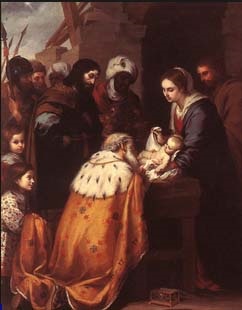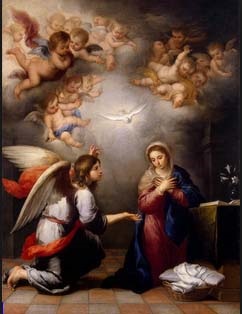
| Print | Back |  |
June 29, 2015 |
 |
Moments in Art Fetching the Fetchiest Art Story Ever Told (Part One)by Lawrence Jeppson |
In last week’s column I dissed Leonardo da Vinci’s Mona Lisa, aka La Giaconda, in favor of his Ginevra de’ Benci. I deny the preference was chauvinistic, Washington winning out against Paris.
Apart that, art lore is stuffed with Mona Lisa fables. My favorite was one of those I recounted long ago in The Fabulous Frauds. It’s a doozy.
Like the tale I told in one of my earliest columns about Whistler and his pet gold fish, my Mona Lisa tale is very apocryphal — except, as I learned many years after I had retold it, the original author, Karl Decker, was an editor of The Saturday Evening Post. The story first appeared in that esteemed weekly magazine in 1932.
In 1911, Mona Lisa was swiped from the Louvre in one of the two most celebrated art thefts of all time. (The other was from the Gardner Museum in Boston decades later.) It was recovered in Italy in 1913.
Decker said that in 1914, he was sitting in a bar in Casablanca with an old acquaintance, Eduardo, Marques de Valfierno, a noted con. There is no record of how many drinks went down, but with Decker’s prodding, Valfierno, who pretended to a Spanish title, confessed that he was the genius behind the Mona Lisa theft.
He made Decker promise he would not publish the story until after he and Frenchman Yves Chaudron, his accomplice, were dead.
It was Decker’s story, as I researched and retold for my book, that prompted Japanese television producers to interview me in Potomac, Maryland, and turn the interview into a 12-part series for Japanese television.
In Argentina, Valfierno and Chaudron took their art peccadilloes to dizzying heights, creating a busy secret factory turning out fakes. Chaudron was the skilled painter, Valfierno the smooth-talking seller.
Well-to-do Argentineans yearned for paintings by the great Spanish painters. Chaudron painted and Valfierno sold bogus Murillos by the score, until the saturation, when “Argentina had more Murillos than cows.”
They favored faking religious paintings by Bartolomé Esteban Murillo (1618-1682). Murillo was born in Seville, Spain. His father was a barber/surgeon, a common calling in those days. In the beginning, Murillo was influenced by three great Spanish painters, Zubarán, Jusepe de Ribera, and Alonzo Cano. He was greatly influenced by a text by Molanus, Treatise on Sacred Images.
Murillo had a prodigious output, especially in religious art and paintings of children. The Prado museum in Madrid is awash with Murillos, and Murillos can be found in every important museum that has Spanish classical art.
At the time of Valfierno-Chaudron, there was very little of genuine Murillos in South America.


Researching in the Library of Congress, I found a 1930 Art Digest article that observed that South America was full of old pictures, “not many worth more than $10, as people who brought them to the U.S. to sell discovered to their dismay.”
Valfierno scrutinized every issue of La Prensa. He skipped the headlines and went straight to the obituaries, searching for names of rich men. Rich men left rich widows, women who would cling to the specter of departed mates, to prove publicly to all critical and suspicious eyes — especially their own — their steadfastness and profound grief.
Soon after the death, the widow would receive a visit from the mannerly Valfierno, who pretended an acquaintanceship with the deceased. To the widow, he seemed like a father figure, a confessor. He played on her feelings of guilt. If she didn’t have any, he adroitly managed to find some for her.
When Valfierno had the widow sufficiently prepped, he popped his trap.
“Senora, you could render no greater honor to your husband than to beautify the chapel of your choice with a fine painting in his name. But it should be the work of a special artist. There is no painter in all of Argentina — no, not in all of South America — who would be worthy of your husband.
I can offer you a great Murillo — a genuine Murillo from the hand of Spain’s greatest painter. Imagine a great Murillo in your chapel to honor — for all who come there — this great man who was your husband.”
If the deceased had come from another city, Valfierno recommended the painting be given to a chapel in the home town, thus keeping Buenos Aires from becoming overcrowded with Chaudron’s fakes.
Valfierno finally tired of bilking widows. He left the business to Chaudron, who by then had become a consummate master faker. Valfierno took a quarter million dollars in gold and hied off to Mexico City. Alas, Chaudron, who was so thin his bones showed through his skin, couldn’t make the fakery scam work alone. He soon followed his mentor.
In the city there was already a famous Murillo extolled by the guidebooks. Valfierno thought it was a bad painting, but it glowed from the bath of public recognition. Security could not have been very good.
Chaudron began painting copies. The plotters would manage to get one of the fresh copies inserted inside the frame behind the original. Both pictures would face the same way. With the fake inside a heavy frame in a poorly lighted location, no would notice the double thickness.
Valfierno lived in a posh hotel frequented by rich Americans. The gift of the confidence man is the ability to spot people susceptible to corruption. Valfierno was pleasantly surprised to discover the relatively large number of people — “collectors” — who would buy anything they were persuaded to admire, even though they could not under any circumstances resell it, exhibit it publicly, or even show it to a few close friends.
They would be forced to forever keep it hidden.
“I can get you that painting, if you’d like it.”
At a time when they would most likely be alone, Valfierno would take his pigeon to see the painting.
“There’s your painting. Like the guidebook says, Murillo never painted a better one. The price we have asked is really not enough, but we’ll stick to our end of the bargain. We’re fools, you see, and we run a lot of risk.”
“You’ll deliver it, out of Mexico?”
“That’s included in the price.”
“I don’t see how you are going to get it.”
“That’s our worry.”
“It’s a deal then.”
“Do you have a pen?” Valfierno asked.
“Yes.”
“Then sign your name to the back of the painting.”
Valfierno would pull the painting away from the wall. He always kept his eyes not on the Murillo but on the room. He would repeat to his customer, “Sign your name, or make any kind of mark you want so you will be sure of its identification, so you can be sure when you get the painting that you have received your Murillo.”
They were, or course, marking the back of the fake.
Some signatures were as flourished and unfakeable as a banker’s name on a cashier’s check, others ingenious ciphers hidden in a corner. An especially wary customer might even snip off a few centimers of folded-over canvas or thread to use as a match with the delivered painting.
Every customer received the exact painting he had inscribed.
Valfierno boasted to Decker that in a good week he could conclude several such sales.
| Copyright © 2025 by Lawrence Jeppson | Printed from NauvooTimes.com |